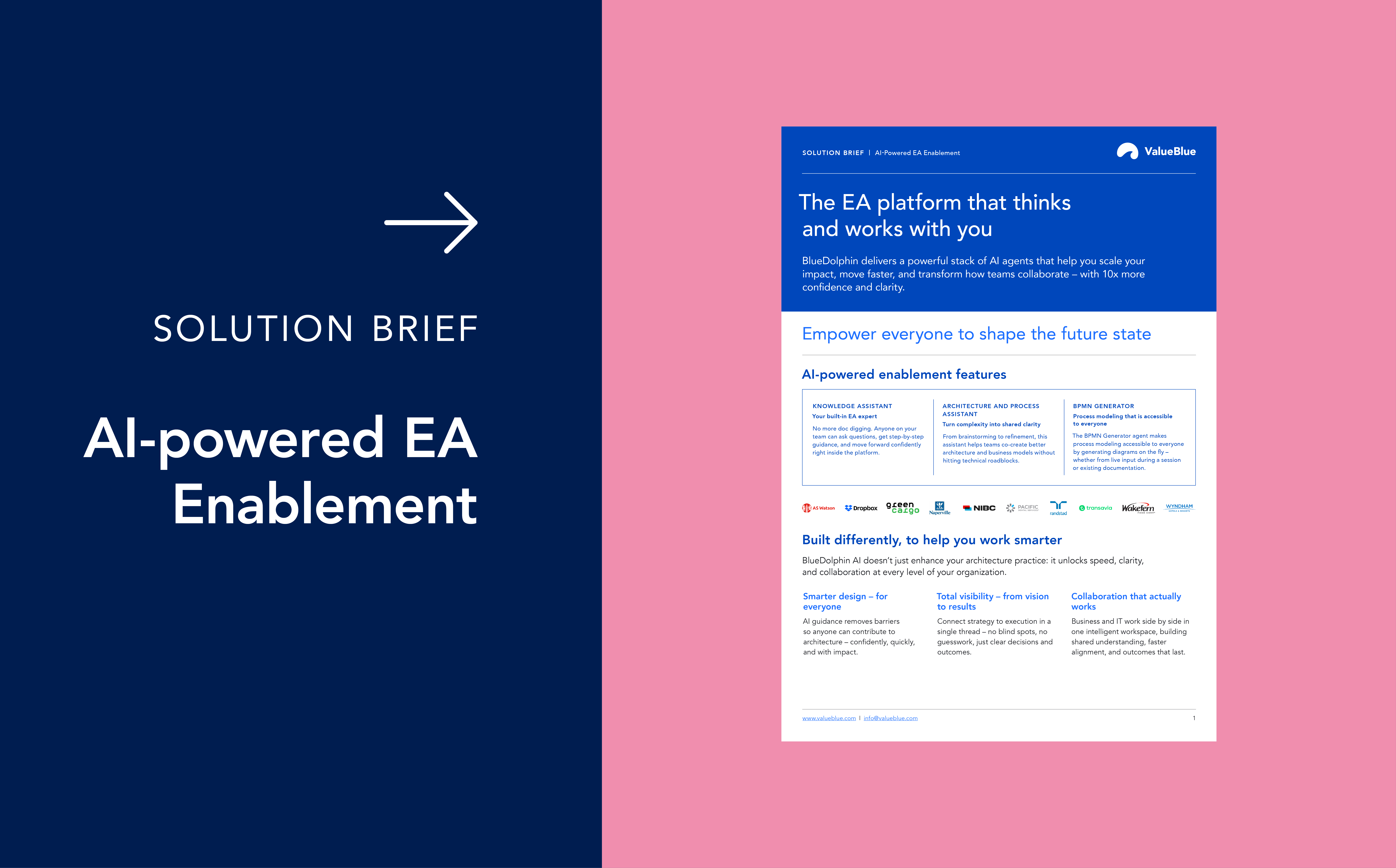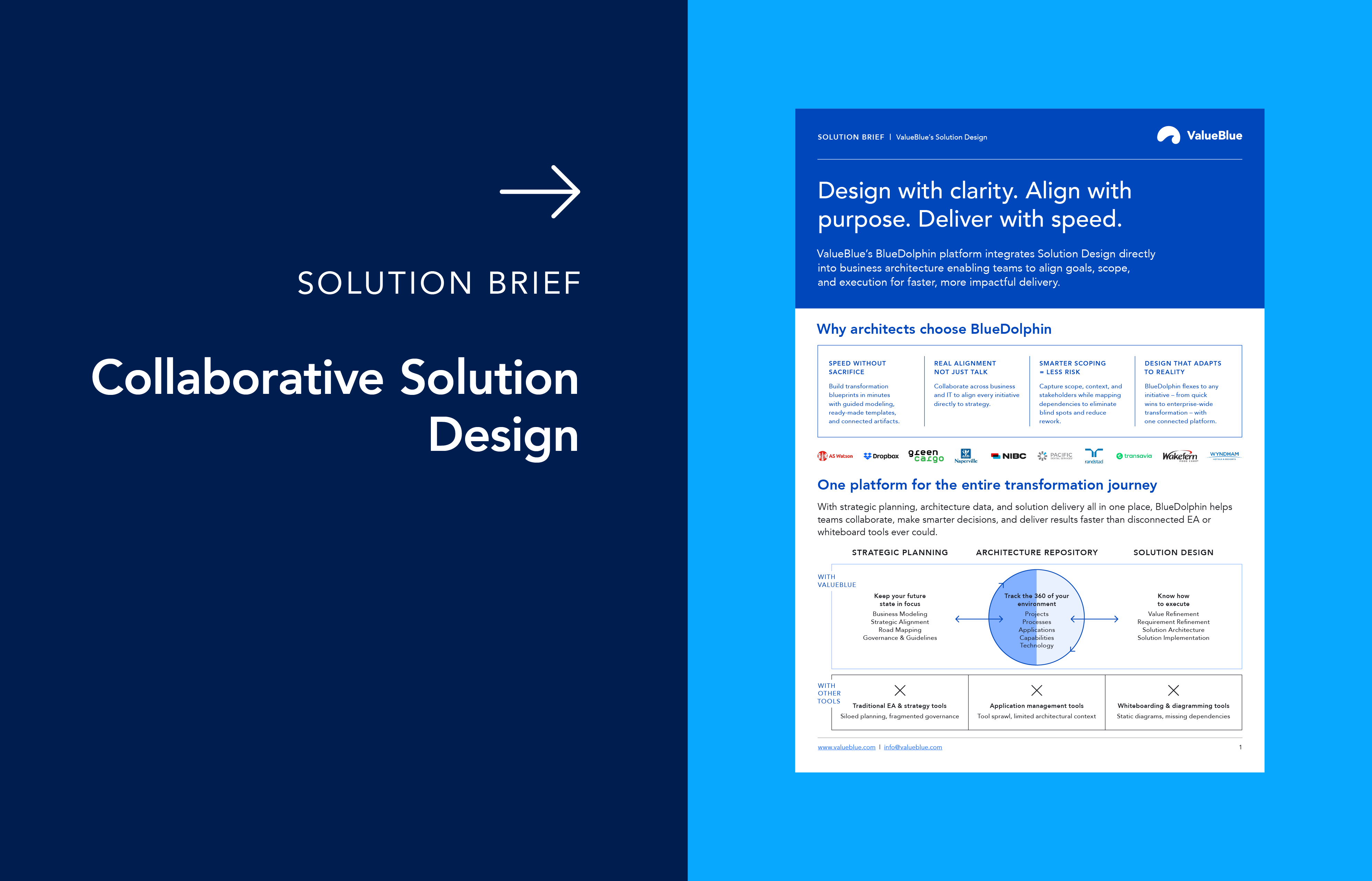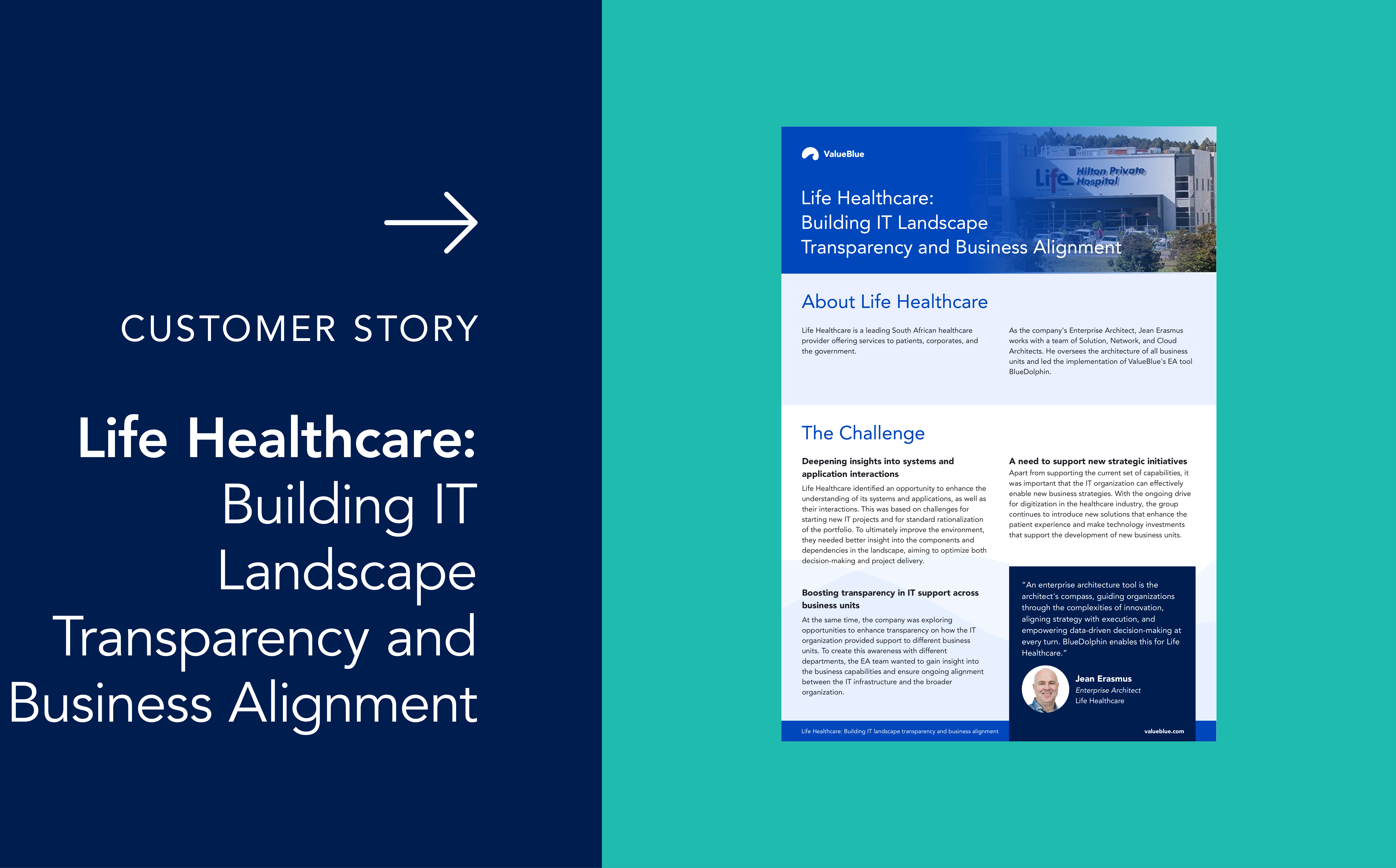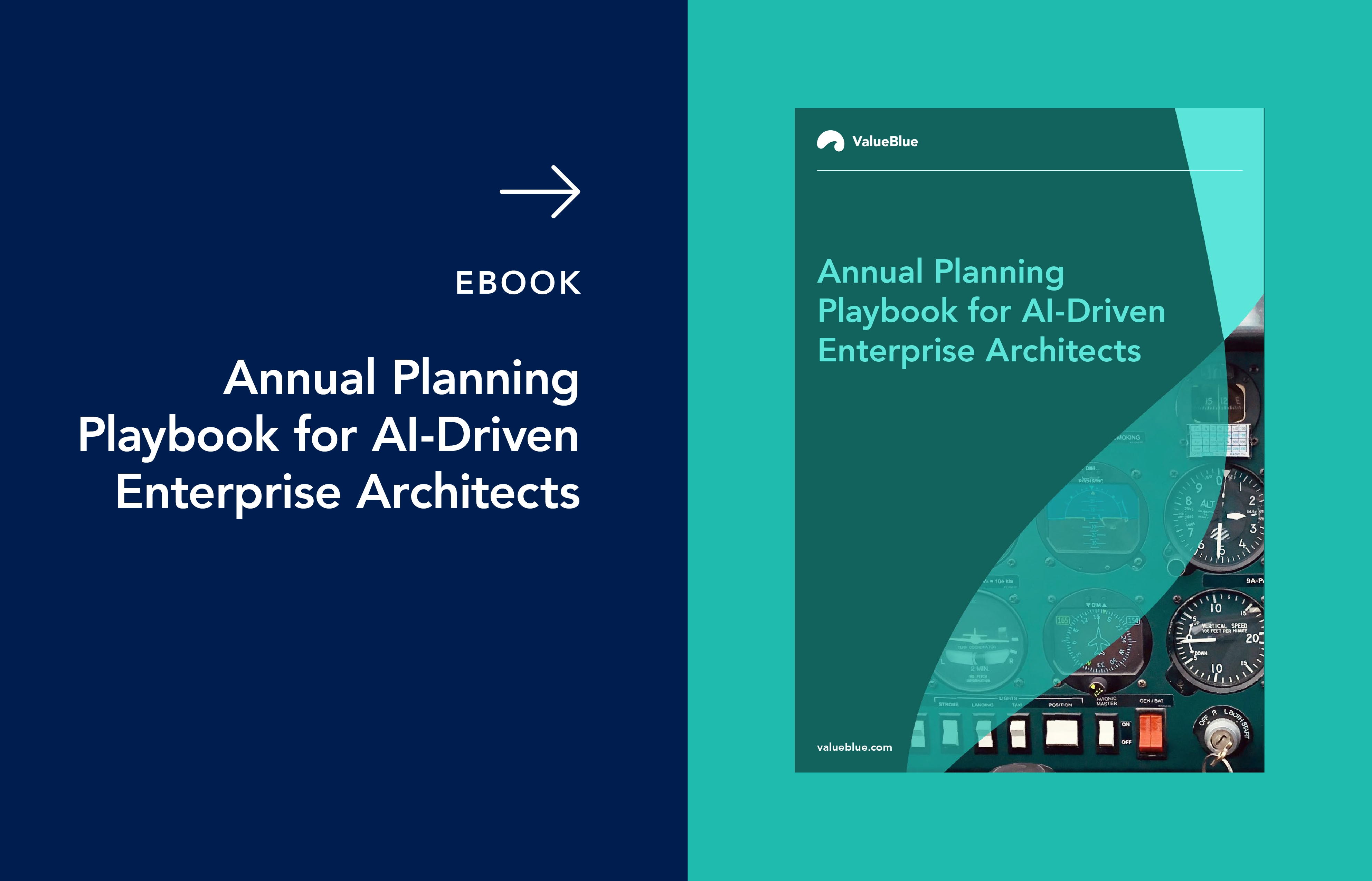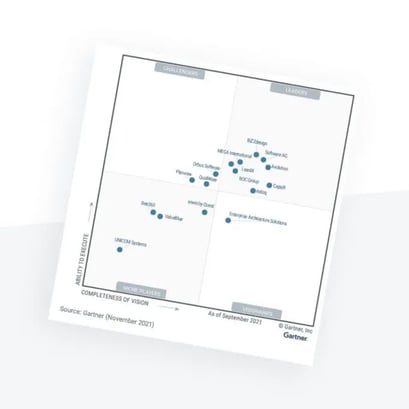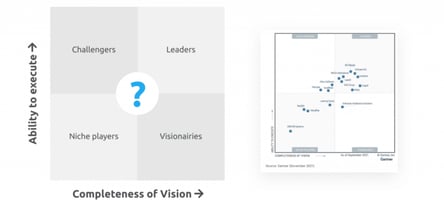Using the Gartner® Magic Quadrant™ for Selecting Enterprise Architecture Tool
Gartner published their first Magic Quadrant back in the 90s. It was the beginning of a powerful research publication (one that was never initially intended to be published) that has become one of, if not the most, influential tools for buyers to evaluate IT vendors and their offerings across the entire sector.
The aim of this article isn’t to be a history lesson, but it’s helpful to understand a little backstory in order to use the Magic Quadrant to its full potential when you are evaluating vendors and tools for your purchasing process or RFP.
So how can you utilize this effective and balanced tool as input for your own vendor selection or shortlisting process? We want to give you some pointers. While most Magic Quadrants operate with similar methodology, we’ll be focusing in this article specifically on using the Gartner Magic Quadrant for Enterprise Architecture tools to help you shortlist the right vendor and Enterprise Architecture software tool for your organization.
History of the Magic Quadrant™
Over the past thirty years, the methodology used by Gartner and their analysts to publish the Magic Quadrants has evolved significantly. What began as a comparatively subjective exercise, involving some external research, vendor interviews and customer or end-user questionnaires has become a honed machine with rigorous processes.
Gartner Magic Quadrant analysts now take into consideration numerous inputs to inform the positioning of vendors on the quadrant – from the regular and frequent vendor briefings and enterprise inquiries to the tabulation of hundreds of questionnaire answers that ranks and weights the various responses in order to position those magic dots in their place on that all-important quadrant.
Commercial factors like revenue and retention rates by geography, segment, and industry are calculated alongside acutely technical specifications designed to test the features and functionality of every tool in a given quadrant as rigorously as possible.
1. How does Gartner select vendors for Magic Quadrant evaluation?
There are carefully up-held criteria for inclusion in a Magic Quadrant report, which means that being positioned is definitely not a given for most vendors in a particular space. Not every vendor or tool in a particular market can expect to be included in a Magic Quadrant. There are carefully managed criteria for inclusion in a Magic Quadrant report.
According to Gartner themselves,
“A Magic Quadrant is not intended to be an exhaustive analysis of every vendor in a market, but rather a focused analysis… criteria help narrow the scope of the research to those vendors that Gartner considers to be the most important — or best-suited to the evolving needs of Gartner’s clients as buyers in the market.” Gartner.com
2. How does the Gartner® Magic Quadrant™ evaluate vendors?
At its core, the Gartner Magic Quadrant evaluates vendor offerings across two axes: Completeness of Vision and Ability to Execute.
Let’s look at this more closely.
How does Gartner evaluate Completeness of Vision?
- The vendor’s understanding of market needs
- The vendor’s proposition and marketing strategy
- The product development roadmap
- Sales and business model strategy, and
- The viability of the vendor’s geographic, vertical, and industry strategies
How does Gartner evaluate Ability to Execute?
- Most importantly, the product and/or service capabilities
- Pricing models and sales execution
- Responsiveness of the market to the proposition
- The customer experience, and
- The vendor’s overall financial health and operations
Taking these factors into consideration helps buyers of Enterprise Architecture tooling shortlist the most relevant vendors for them, based on their own governance and application or software policies and principles. The various elements of each axis will carry either more or less weight for your company and use case, so consider these well and then take a look at the vendors displaying the characteristics that best align with your organization’s own vision.
3. Who is the Magic Quadrant Analyst writing for?
Be aware that Magic Quadrant Analysts naturally cater largely to Gartner audiences: large Enterprises who are late adopters of innovative technology solutions.
There is a common misconception that vendors positioned as Visionaries or Niche Players of the quadrant somehow “fall short” in comparison to the Leaders. This is not the case. Take another look at those segment names: Visionaries are rightly being recognized for their cutting-edge solutions in a market with Leaders that may be somewhat static. Similarly, Niche Players are often so-positioned in recognition for their strengths within particular market segments, geographies, or verticals. Typically, vendors in the Niche Player segment are also often newer to the market – which brings with it a drive for innovation and the opportunity for you as a buyer to implement a platform before it becomes a market leader (with pricing to match).
“If disruption is the future of technology, then the future belongs to the challengers who out-think the legacy competitors who have left the landscape static and virtually unchanged, and in doing so it will give CIOs a new direction to follow when it comes to defining the most qualified vendors for best-of-class products and services to solve their business problems with the best potential for increasing their rate of internal innovation and their long-term ROI.” Huawei, Forbes.com
If you’re a bank looking for a data management solution, would you rather work with a data management tool that is fully focused on compliance in your specific industry, or one that is more broadly applicable?
4. Should you just shortlist vendors in the Leaders category?
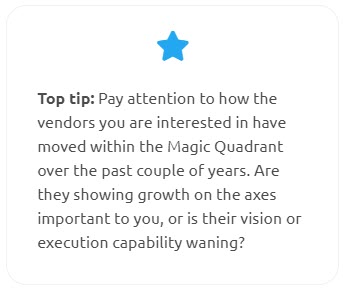 The general consensus is: definitely not. To do so would be to potentially miss out on vendors that are perfectly in tune with your own company values and vision. Are you in an industry facing digital transformation challenges and high pressure to innovate (and let’s face it, in 2021, who isn’t?)? Then you’ll want to pay attention to each vendor’s proposition and vision for the future of Enterprise Architecture. Do they solve architectural and transformation challenges in a way that is future-proof for your organization?
The general consensus is: definitely not. To do so would be to potentially miss out on vendors that are perfectly in tune with your own company values and vision. Are you in an industry facing digital transformation challenges and high pressure to innovate (and let’s face it, in 2021, who isn’t?)? Then you’ll want to pay attention to each vendor’s proposition and vision for the future of Enterprise Architecture. Do they solve architectural and transformation challenges in a way that is future-proof for your organization?
“To take a basic analogy, if you were in the motoring industry you might watch Top Gear for the latest tips but you wouldn’t necessarily base what car you buy just on its advice. Featuring in the Magic Quadrant is a tick in the box out of a range of factors to take into consideration.” John Finnegan, Perceptive Software
Top tip: Pay attention to how the vendors you are interested in have moved within the Magic Quadrant over the past couple of years. Are they showing growth on the axes important to you, or is their vision or execution capability waning?
5. Use the Magic Quadrant™ as a starting point
In conclusion? Use the Magic Quadrant™ to kick off your selection process, but don’t see it as scripture. Evaluate not only the Quadrant itself but the full report and vendor strengths and weaknesses. Start by outlining your own organization’s policies, principles, and requirements in a platform, but also in a vendor. Your Enterprise Architecture platform vendor will become a business partner as well, of course, so consider whose vision and values align best with yours – rather than just an anonymous checklist of features.
When all’s said and done, the Gartner® Magic Quadrant™ is a brilliant starting point to help you orient yourself in a vendor market area that offers plenty of great solutions. Just evaluate with care and make sure you don’t miss out on the greatest solution for you.

